During recent walks around Bull Island and the Washo Reserve at Santee Coastal Reserve I noted fallen trees from Hurricane Matthew. These casualties were quite limited relative to Hurricane Hugo’s effects in the same areas. I found myself peering under the overturned root balls, on the lookout for shell midden remains and Native American artifacts, a post-Hugo habit on my property and in Cape Romain. One particular oak’s root system exposed through Nature’s excavation yielded a fascinating look into the Woodland Period of Native American occupation. 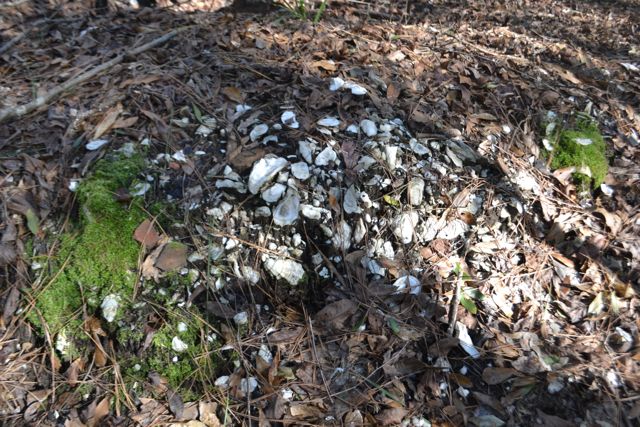
Nature has other means of felling trees besides cyclones. The skeleton forest of Bull Island’s Boneyard is the result of the inexorable march of the ocean through the maritime forest.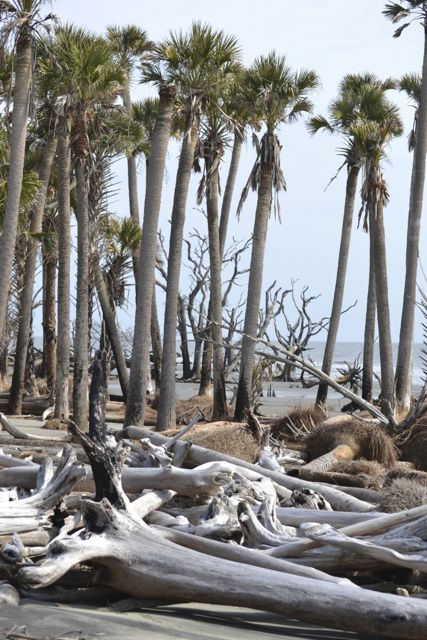 There is a term used in the mountains (and by forest workers in general) for a section of tree, or a whole tree, falling and killing one below – the widowmaker. In my trips to Great Smoky Mountains National Park, there have always been new blowdowns caused by severe storms and the mountain wave winds. Often with tragic results, fallen trees at times serve a purpose.
There is a term used in the mountains (and by forest workers in general) for a section of tree, or a whole tree, falling and killing one below – the widowmaker. In my trips to Great Smoky Mountains National Park, there have always been new blowdowns caused by severe storms and the mountain wave winds. Often with tragic results, fallen trees at times serve a purpose. 
Trees tell a story if we listen; some standouts have a recorded history. In the past week a severe storm on the West Coast finally toppled a storied redwood tree – the Pioneer Cabin tree, located in a California state park. A tunnel had been carved through this tree in the 1880’s, allowing walkers, people on horseback, and eventually cars to pass through. The time for the tree to return to the earth had come for this redwood estimated to be over a 1000 years old.
An Awendaw pine has its own story. It somehow survived the 135 mph sustained winds of Hurricane Hugo while the majority of the pine trees in the area were snapped like matchsticks. This pine elder stood right next to Seewee Road near the intersection with Simmons Hill Road. Over 21 years after Hugo, the tree took the full impact of a speeding car on June 25, 2011, killing Edward Simmons. A marker next to the tree memorializes Simmons.
Edwards Simmons
Sunrise Feb 22 1970 Sunset June 25 2011
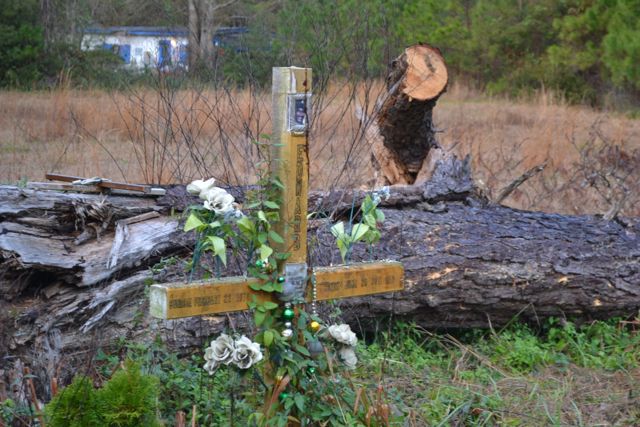
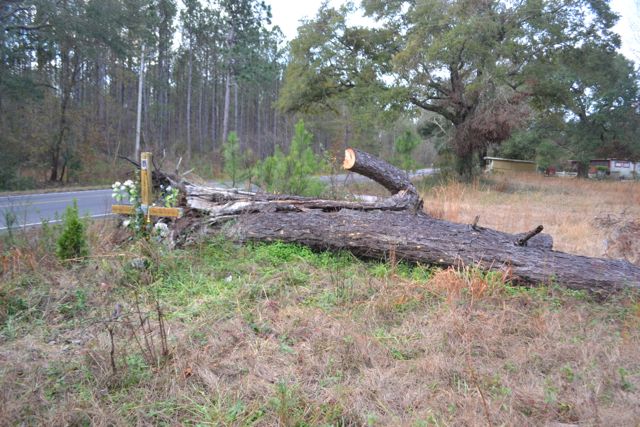 Simmons was a member of the large extended Simmons family living on Simmons Hill Road and in the vicinity. (Author William Baldwin interviewed a Simmons elder years ago, and published this oral history “James Simmons’ Life Ever Lasting” in Inland Passages: Making a Lowcountry Life. It is a fascinating story, especially Simmons recalling his work for Gayer Dominck on Bull Island.) Five years after the accident, the tree toppled one day into the adjacent empty lot. While the tree has turned into firewood, the memorial to Edward Simmons still stands.
Simmons was a member of the large extended Simmons family living on Simmons Hill Road and in the vicinity. (Author William Baldwin interviewed a Simmons elder years ago, and published this oral history “James Simmons’ Life Ever Lasting” in Inland Passages: Making a Lowcountry Life. It is a fascinating story, especially Simmons recalling his work for Gayer Dominck on Bull Island.) Five years after the accident, the tree toppled one day into the adjacent empty lot. While the tree has turned into firewood, the memorial to Edward Simmons still stands.
“If a tree falls in a forest and no one is around to hear it, does it make a sound?” I experienced a variation on this old metaphysical question about reality and perception in 1973. On that winter night I was walking with friends near the Washington Cathedral, venue for a free performance of Leonard Bernstein’s Mass (with the composer conducting). We were not able to go inside to listen due to the overflow crowds, and were among the 15,000 listening via an outdoor sound system. Walking by the mature trees of Olmstead Woods (designed by Frederick Olmstead Jr, the son of the Central Park landscape architect), we heard a large crack and thunderous crash, and felt the ground’s tremor. We scrambled to the fallen tree, and were relieved that no one was underneath. The music that night was billed as a Concert of Peace, but I had not remembered that the January 19, 1973 happening was an alternative inauguration event to Richard Nixon’s landslide re-election.
I was not around to hear the trees falling on my home and property during Hurricane Hugo, having wisely decided to evacuate Awendaw to Columbia with my family. 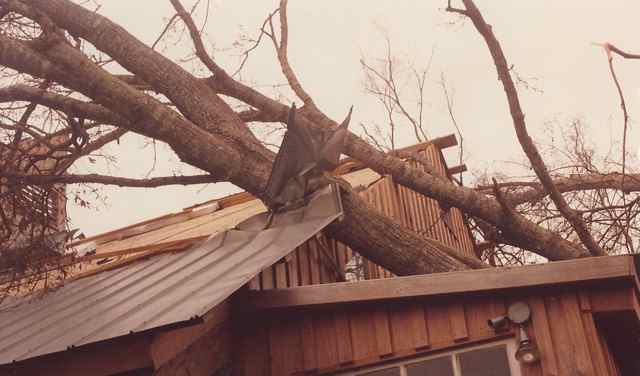 The sound of trees crashing on the metal roof would have been frightening – I learned of that fear from my neighbors’ traumatic experiences. Almost every mature tree on my property came down via uprooting. However I had one large hickory on the back of my property survive, most likely due to nature’s pruning a few years before. I recalled driving home from work: the sky was so darkened by the thunderstorm, and the rain was coming down so hard, that I had to stop on the dirt road. I noticed a flaming ball up high – a fallen branch burning on a power line. A few days later I noticed part of the top of that hickory blown out, and during Hugo the reduced crown functioned like the reefing of a vessel’s sails.
The sound of trees crashing on the metal roof would have been frightening – I learned of that fear from my neighbors’ traumatic experiences. Almost every mature tree on my property came down via uprooting. However I had one large hickory on the back of my property survive, most likely due to nature’s pruning a few years before. I recalled driving home from work: the sky was so darkened by the thunderstorm, and the rain was coming down so hard, that I had to stop on the dirt road. I noticed a flaming ball up high – a fallen branch burning on a power line. A few days later I noticed part of the top of that hickory blown out, and during Hugo the reduced crown functioned like the reefing of a vessel’s sails.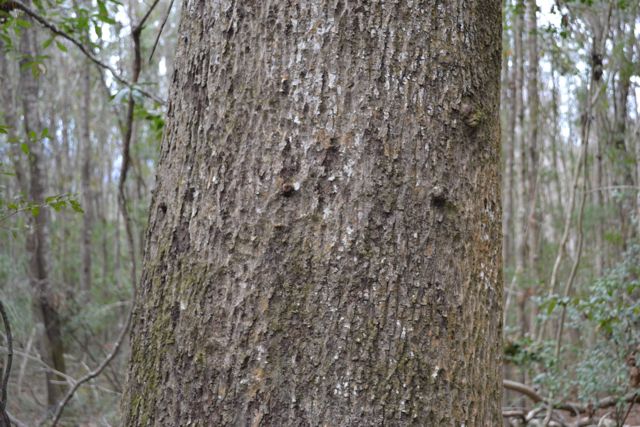
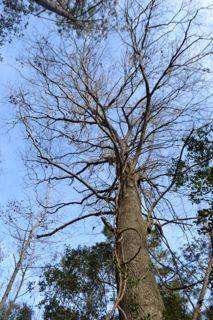 I have a love for this tree, and am happy that it is still standing proud as a survivor. I have fallen out of love with another tree, the Chinese tallow tree or popcorn tree, a few of which I innocently planted back in the 1980’s. I was not sad that the largest specimen on my property was brought down by Hurricane Matthew.
I have a love for this tree, and am happy that it is still standing proud as a survivor. I have fallen out of love with another tree, the Chinese tallow tree or popcorn tree, a few of which I innocently planted back in the 1980’s. I was not sad that the largest specimen on my property was brought down by Hurricane Matthew.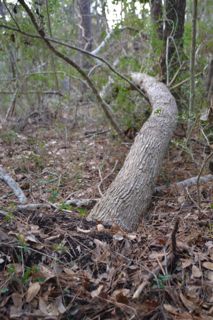 This invasive plant aggressively propagates, and overran large sections of Bull Island after Hugo. I will make it a point to take down the remaining ones this winter.
This invasive plant aggressively propagates, and overran large sections of Bull Island after Hugo. I will make it a point to take down the remaining ones this winter.
Wonderful story Bob. I too enjoy the many trees we have here in Pennsylvania and sad when one falls from old age. The glorious years they have had, and a shame they could not tell their stories. That is what life is all about for them. To enjoy the gift, pass on their seeds and quietly pass as the wind blows by.
I noticed the pine by Seewee Road had a few small pine volunteers around the base ready to take it’s place.